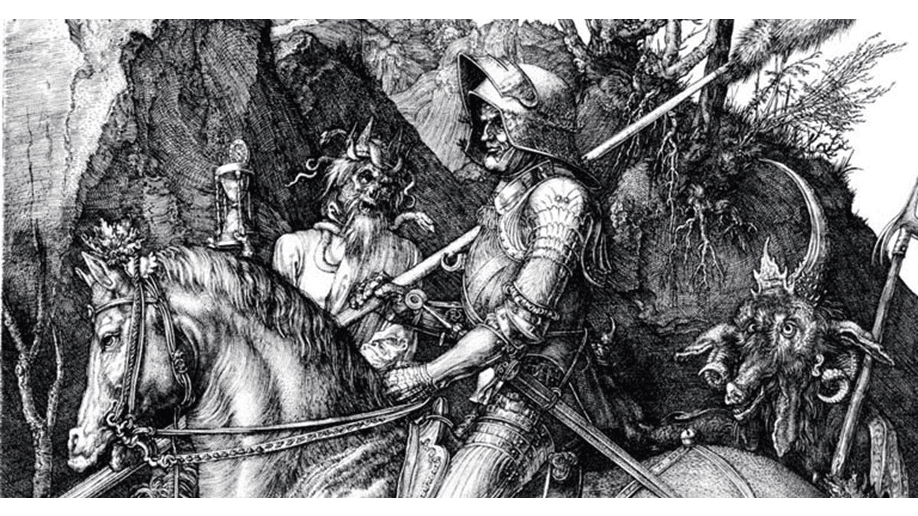The knight was going home. As he rode along a dim, dangerous, and narrow mountain path, dark beings plagued his every step. He had faced great terrors in his life, and these demons fazed him not.
He calmly rides forward on his mighty warhorse, his loyal hound at his side. The path meanders upward; the knight has a long way to go on this perilous journey.






